- Published on
Svix Update July 2021
- Authors

- Name
- Tom Hacohen
- @TomHacohen
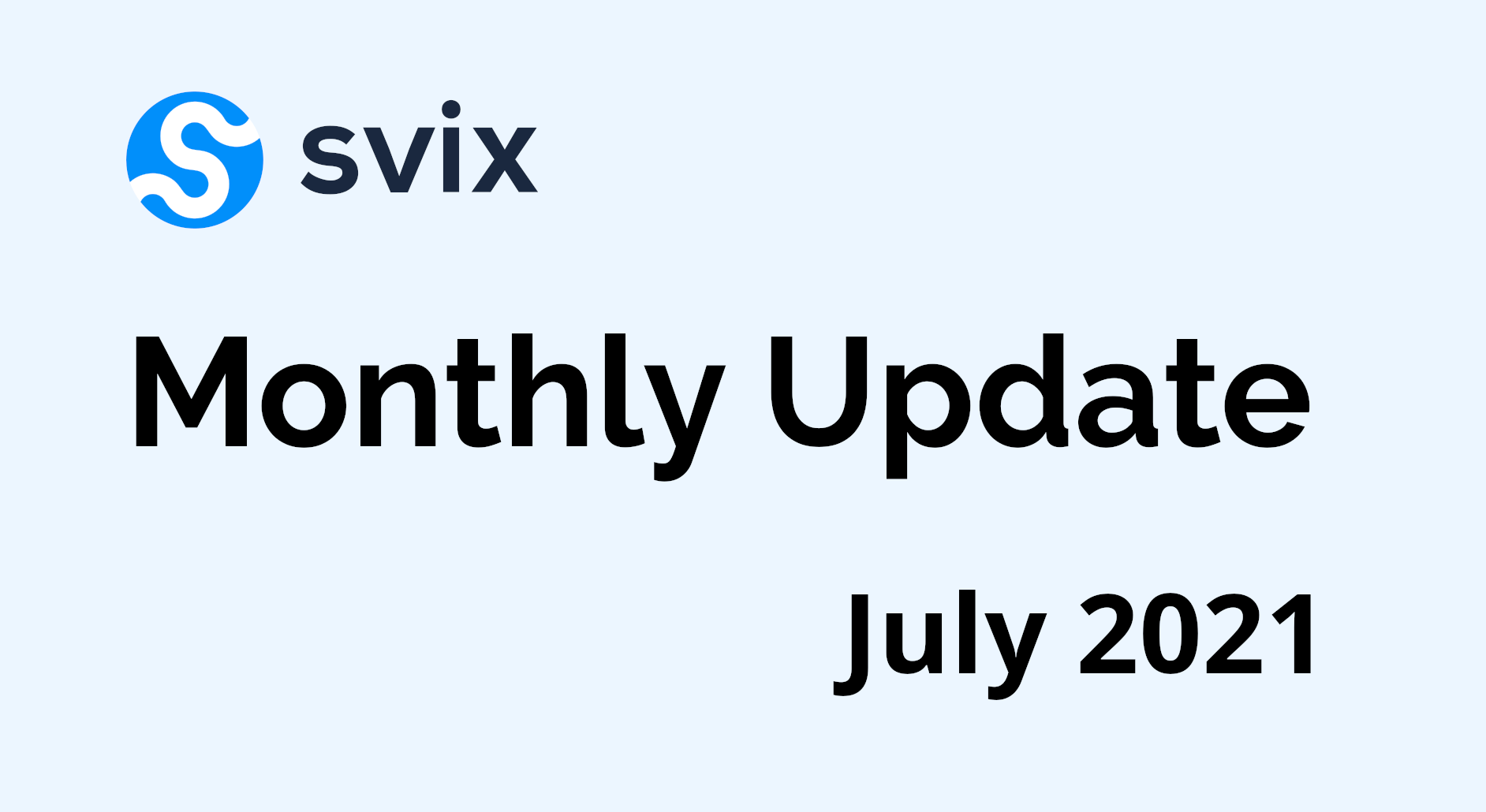
We added some long-awaited features such as multiple environments, managing organization members, configurable rate-limiting and more. Here is some of what's been going on.
Configurable rate-limiting
While Svix can handle however many messages you send us, your customers' endpoints may not be able to. This is why we made it possible to rate-limit the amount of webhooks per second you send to your customers, and now you can configure the wanted rate on both the application and the endpoint level.
This lets you send us as many webhooks per second as you want without having to worry about overloading your customers' systems.
You can read more about it in the rate-limiting docs.
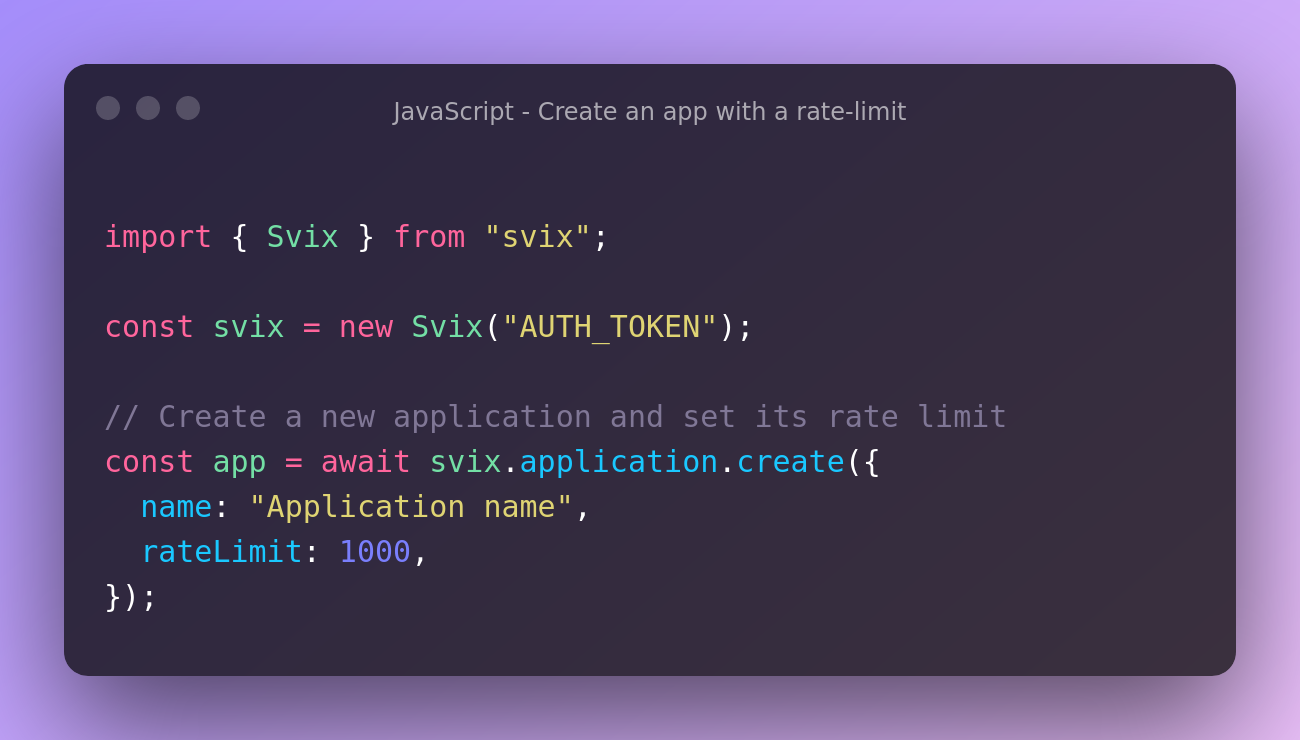
Svix CLI listen
We have added a new command to the Svix CLI - svix listen.
You can just run svix listen http://localhost:8000/path/to/webhook/ and the Svix CLI will give you a public facing URL that you can use. Every webhook reaching this URL will be forwarded to your local webhook endpoint which makes developing against a webhook API a breeze.

Webhooks debugger and playground
This probably deserves its own blog post, but we just couldn't wait to write about it any longer!
We are very happy to introduce the new Svix Play webhooks debugger and playground and its integration with the Svix CLI. It's a very useful tool for anyone developing webhooks - for both senders and consumers. More so, it's available to everyone for free, not just users of Svix!
It has two operation modes: echo and relay. In the echo mode you just copy the URL from the website and send webhooks to it. All of the webhooks will automatically send a successful respond to the sender and let you inspect the webhooks it received. This is something that Svix already offers out of the box, but this tool is still useful for testing, and especially when testing non-Svix webhooks. The relay mode is the integration with Svix CLI, where you can just run svix listen (see previous section), and in addition to the request forwarding you'll also get full visibility to your requests in the Play UI.
For more information please head to the Svix Play homepage.
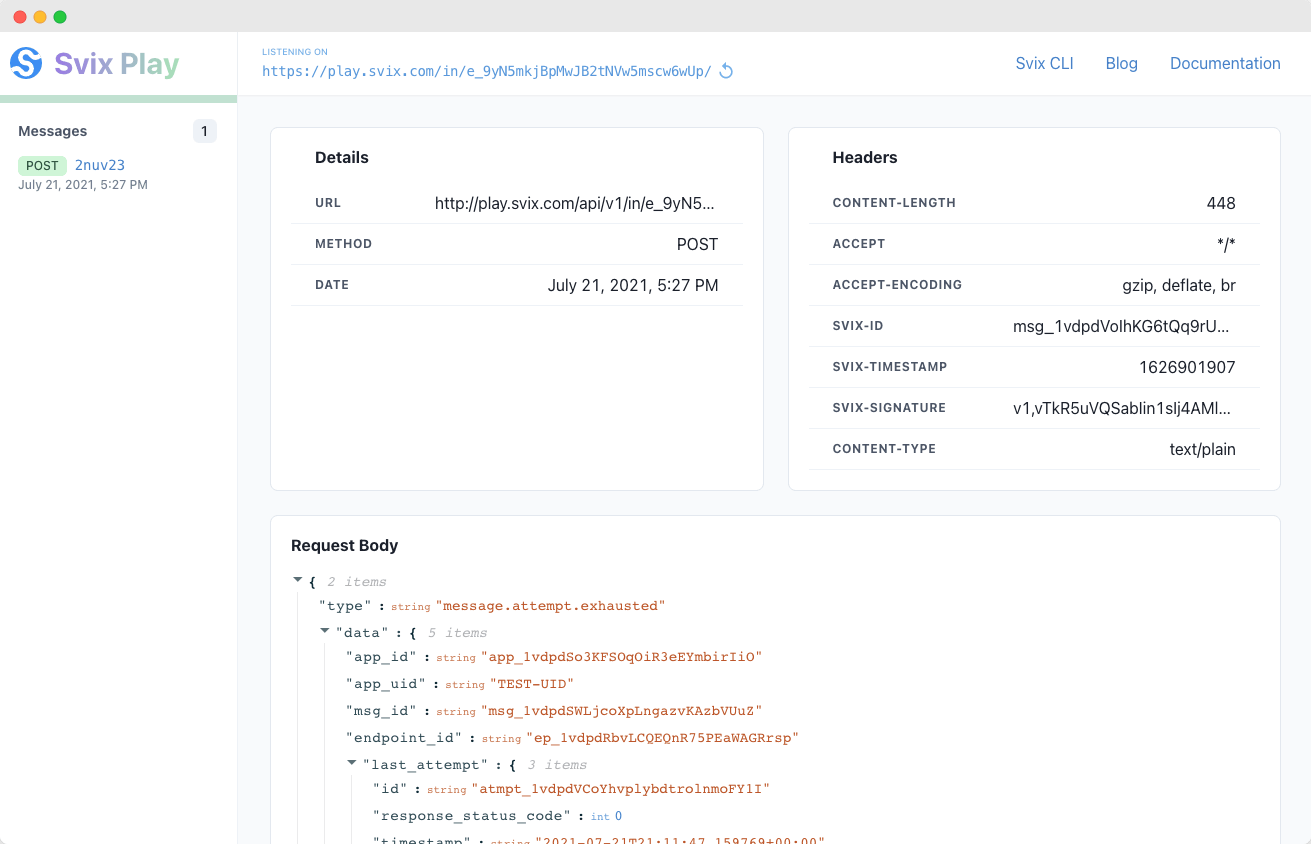
New C# library for signing and verifying webhooks
In addition to our JavaScript/TypeScript, Python, Go, Java, Ruby and PHP libraries for signing and verifying webhooks, we now also have a C# library! These libraries make it easy for your users to verify the signatures on the events you send from the language of their choice.
You can find all of the Svix libraries in the Svix-libs source repository.
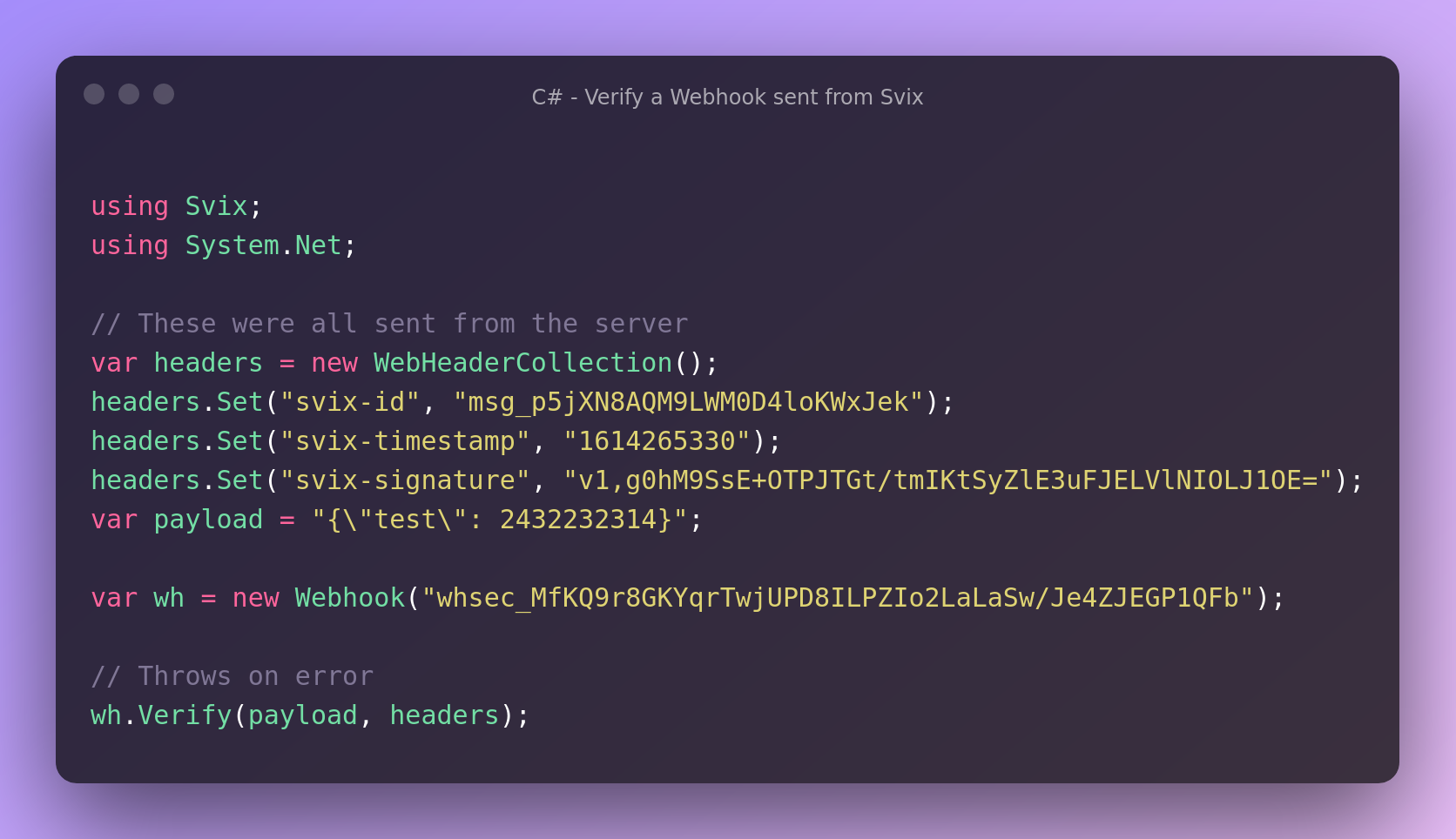
Multiple environments
We already covered multiple environments in their own blog post, but they have been requested so often requested that they deserve a mention here as well.
In short: we now support having multiple environments (e.g. dev, staging and prod) under the same account.
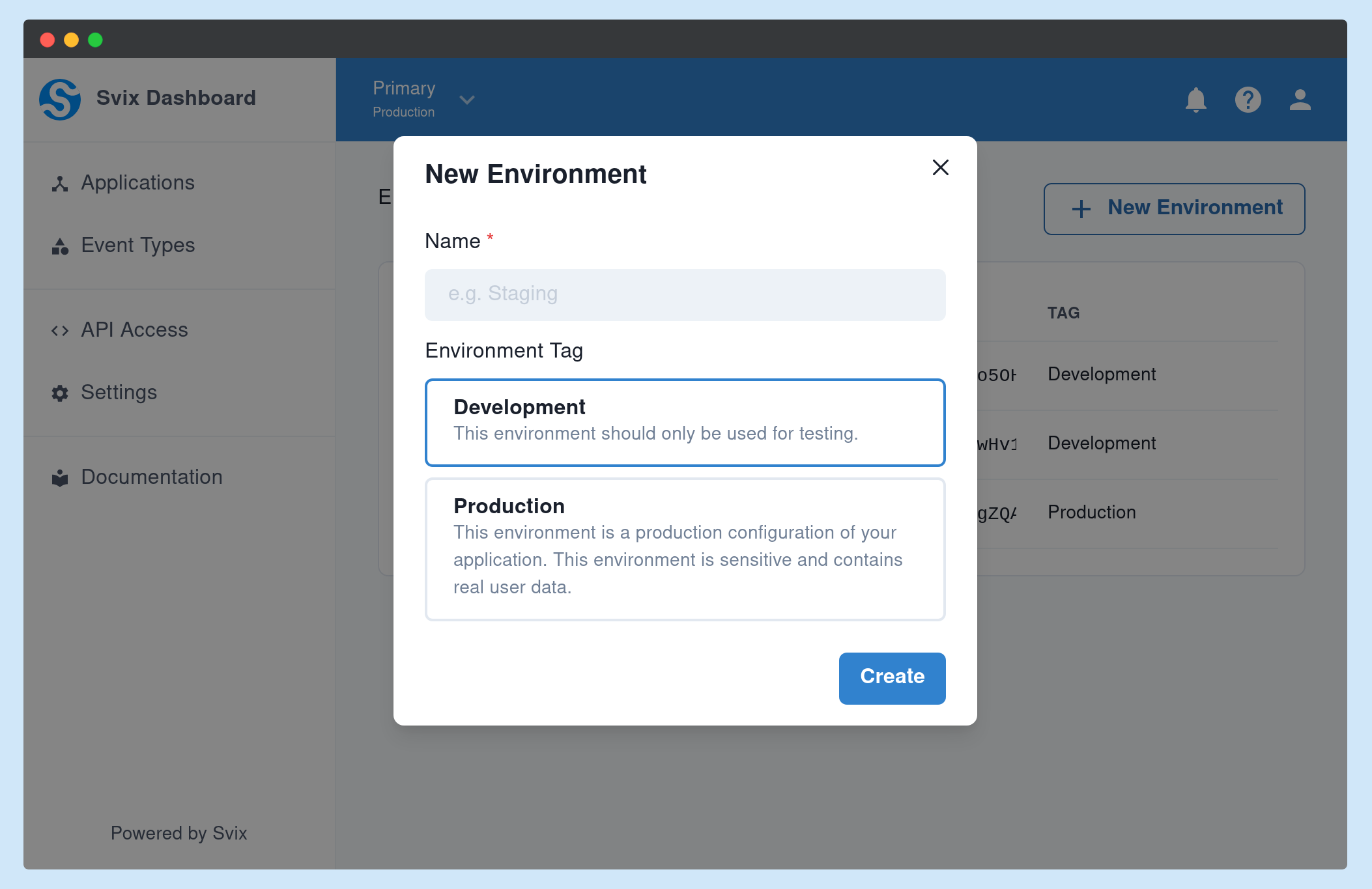
Managing organization members
This too was covered in its own blog post, but it has been requested so often requested that it deserves a mention here as well.
In short: you can now manage the members of your organization and give them access to your account.
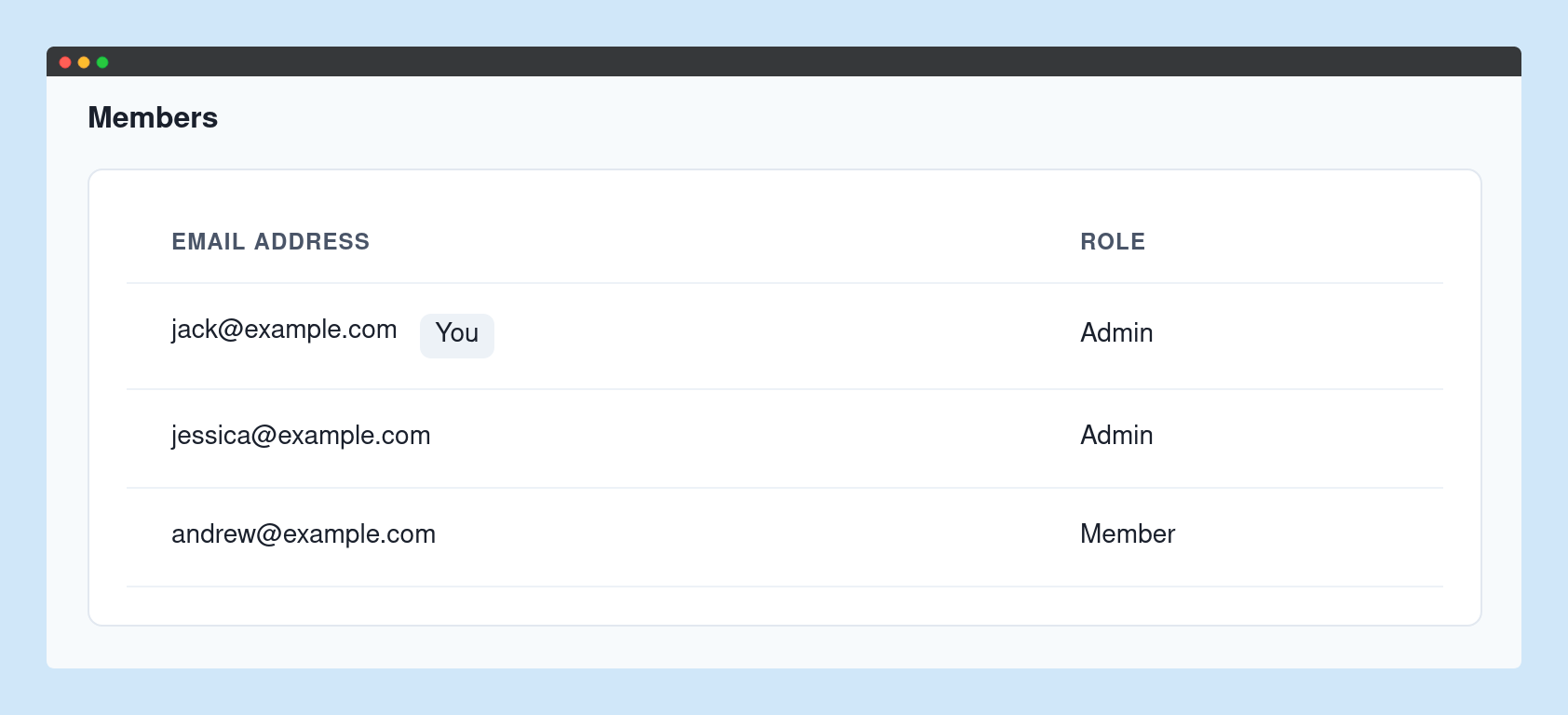
Webhook notifications from us to our users
We have added a section to the dashboard where you can now listen to webhooks we send to you (using Svix, of course...).
You can use it to know (and act) when all attempts for sending a message to your user has failed, or when an endpoint has been disabled after failing for a long period of time. You can use these for updating the information on your own system, letting your customers know about their misconfiguration, or really anything you can dream of.
It uses the same pre-built application portal we offer our users.
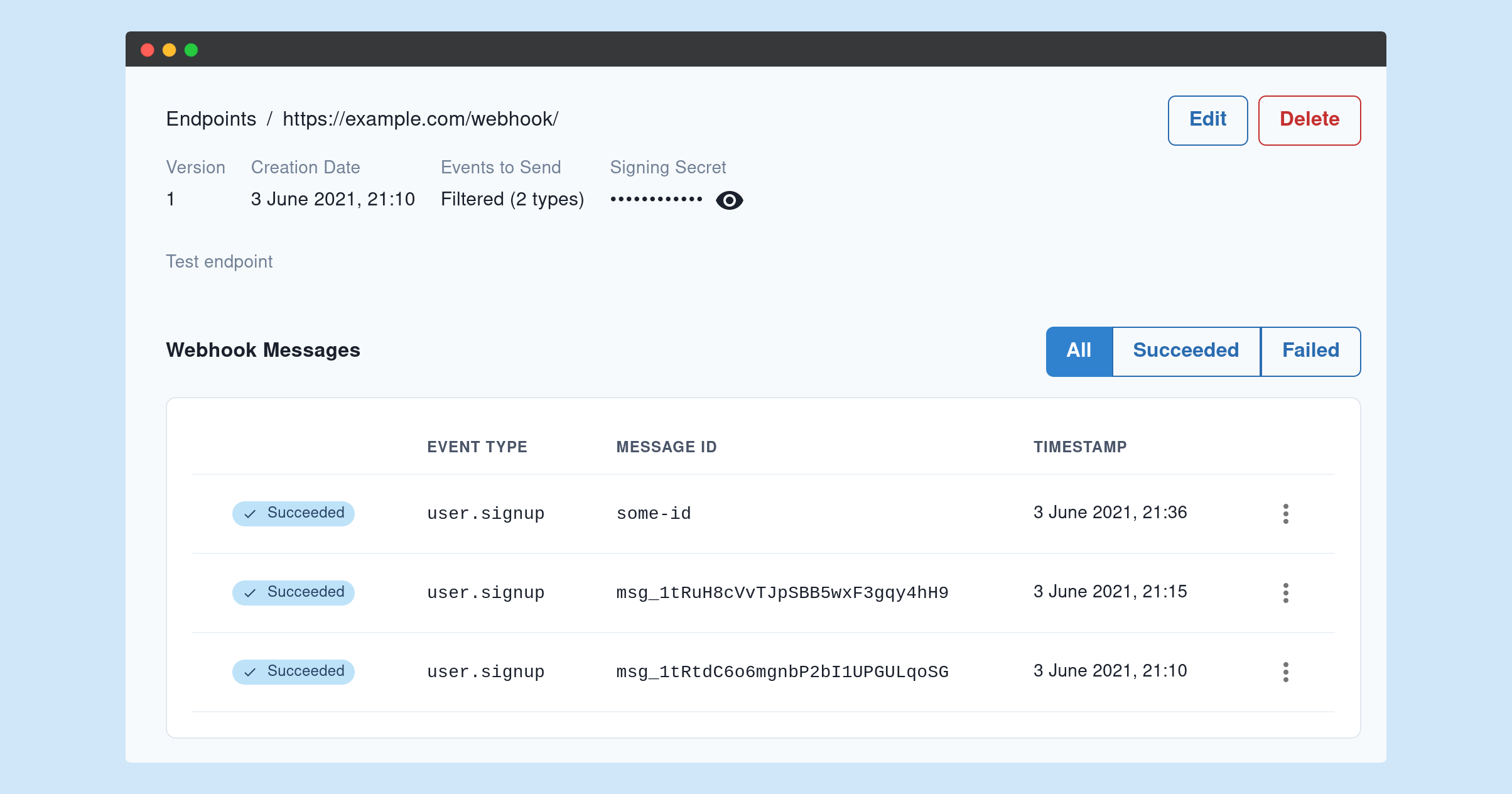
General improvements
We also made a bunch of improvements to our backend, dispatcher and the UI, laying the ground work for many exciting features we have been working on and can't wait to share in the next few weeks!
Coming next
We have a lot more coming, including some more in-depth blog posts about some of the topics above. If you have any thoughts or suggestions regarding what we should work on next, please join the Svix Slack and let us know!
This is it for this update, but make sure to follow us on Twitter, Github or RSS for the latest updates for the Svix webhook service, or join the discussion on our community Slack.